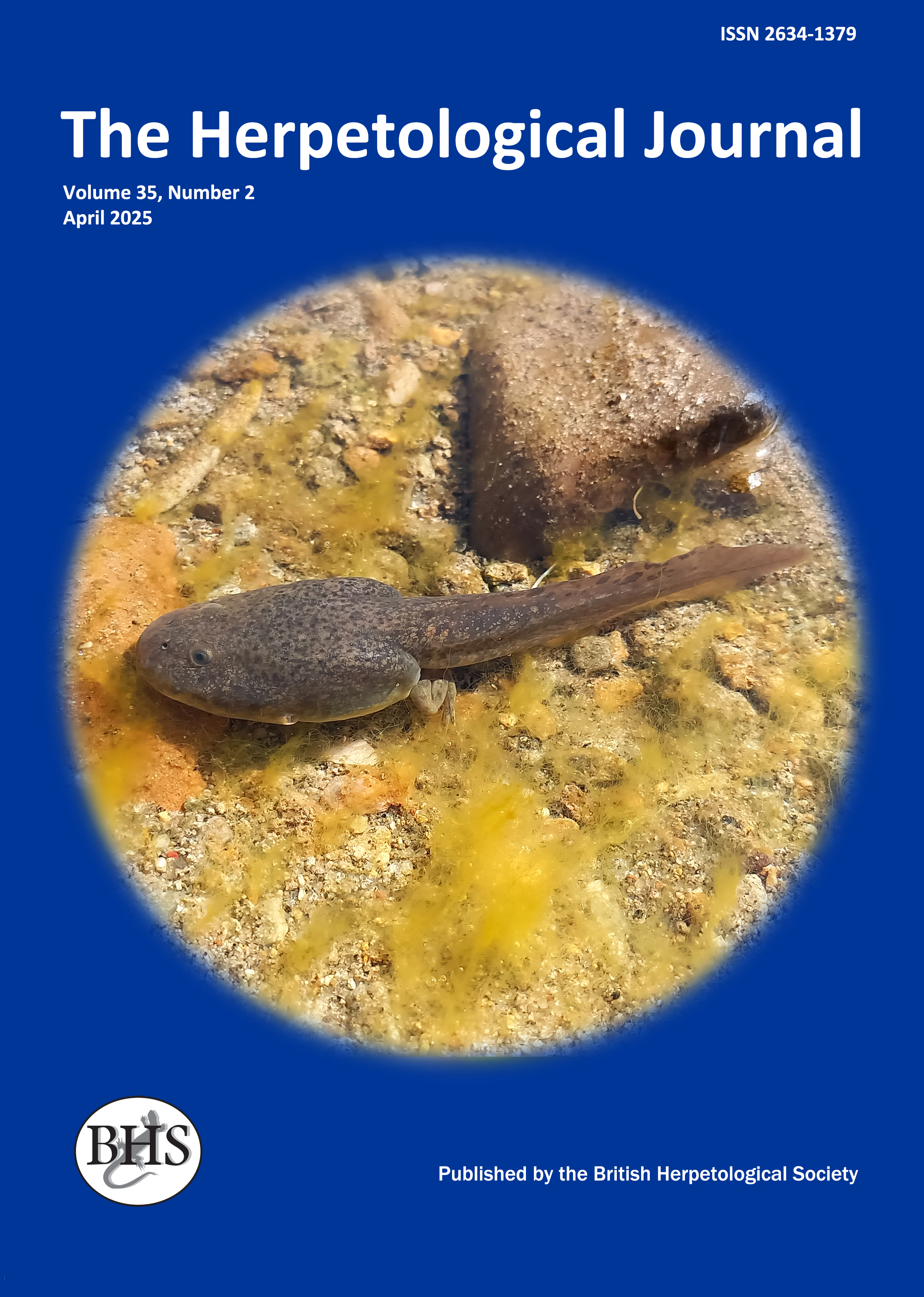
The Herpetological Journal
The Herpetological Journal is the Society's prestigious quarterly scientific journal. Articles are listed in Biological Abstracts, Current Awareness in Biological Sciences,Current Contents, Science Citation Index, and Zoological Record.
ISSN 0268-0130
2021 Impact Factor from Clarivate for the Herpetological Journal is 1.194, an increase of 0.332 from 2020.
pdf 03. Observations of Gut Function in young Green Turtles Chelonia mydas L
1037 downloads
Open Access
pp.336-342
Authors: J. Davenport, S. Antipas And E. Blake
Abstract: Food consumption in post hatchling Chelonia mydas rises linearly between 1 8°C and 33°C. It is predicted that food intake will cease between 15°C and 16°C. The large intestine of post hatchlings is only half the length of the small intestine (c.f. 2. 5 times the length of the small intestine in adults). The food of post hatchlings spend most of its transit time in the stomach and small intestine; that of yearlings (i.e. animals of0.5- 1.0 kg body wt) spends most time in the large intestine. The changes in gut proportions and in the residence time of meals in the large intestine during development are correlated with a shift from a carnivorous to a herbivorous diet. Yearling turtles are capable of digesting plant material, achieving an energy absorption efficiency of 68 per cent on a diet of Zostera ( c.f. 87 percent on a diet of cod flesh). Yearlings have the ability to move food to and fro in the large intestine; several meals reside in the large intestine at once and become mixed. Posthatchling and yearling Chelonia mydas can store food for short periods in the oesophagus.

